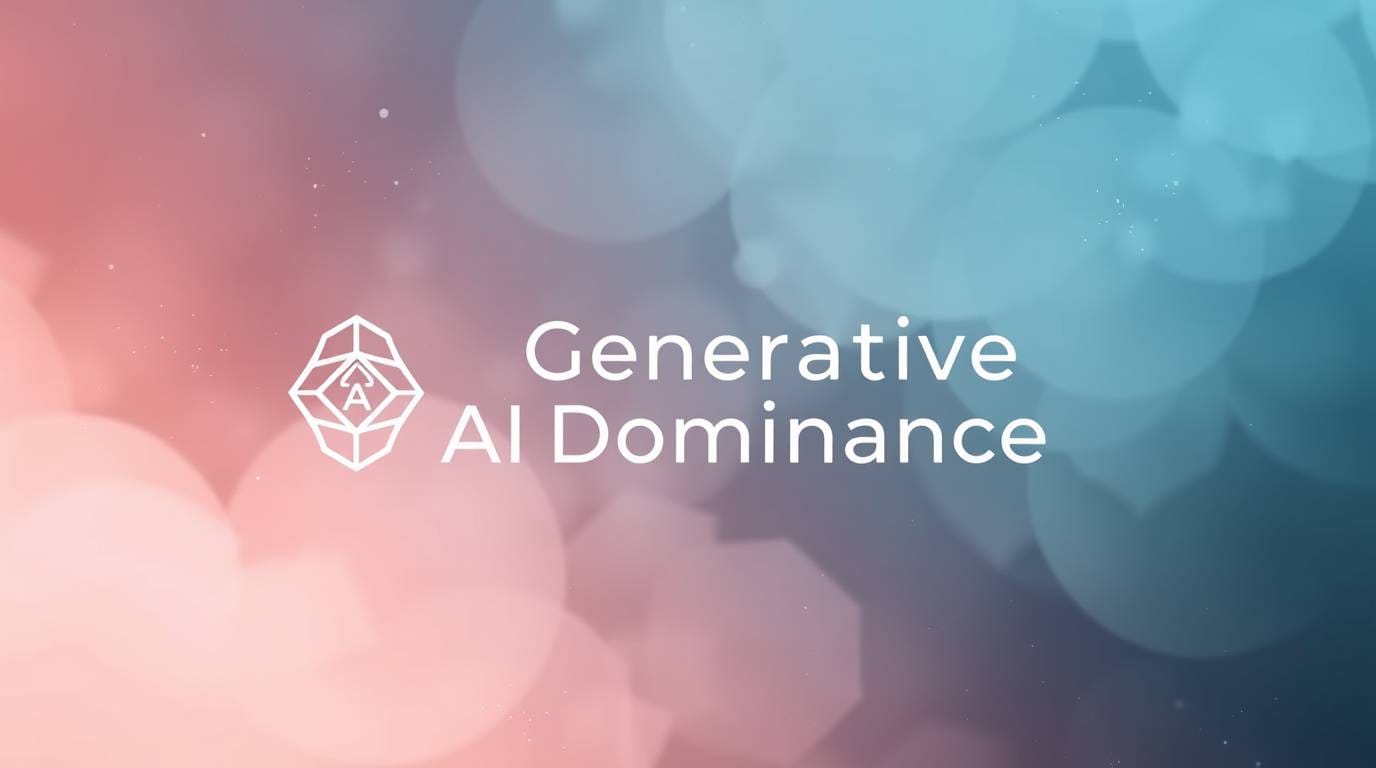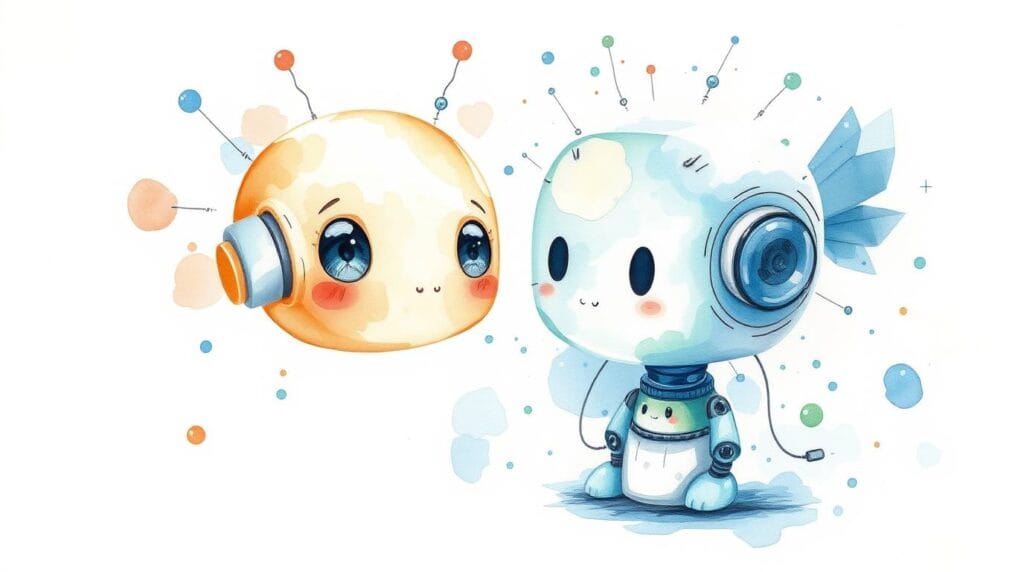
The world of artificial intelligence has taken another leap — and leading this revolution is Generative AI, a technology that’s reshaping entire industries. From content creation to design automation, generative AI is no longer a futuristic concept — it’s a real, dominant force that’s changing how businesses, creators, and developers work.
What is Generative AI Dominance?
Generative AI refers to machine learning models that can generate new content — be it text, images, music, code, or even videos — based on the data they were trained on. Unlike traditional AI models that classify or predict, generative AI can create.
Some popular examples of generative AI tools include:
- ChatGPT (OpenAI) – Generates human-like responses and content
- Google’s Veo – Converts text into high-quality videos
- DALL·E & Midjourney – Generate stunning visuals from prompts
- GitHub Copilot – Auto-generates code for developers
7 Ways Generative AI is Revolutionizing Creative Work
1. AI-Powered Content Creation
Generative AI is transforming how we produce content. From blog posts and social media captions to marketing copy, AI tools can generate high-quality content instantly, saving time and resources.
- Applications: Automated article writing, email campaigns, and product descriptions.
- Benefits: Faster output, reduced human workload, and the ability to scale content strategies efficiently.
- Impact: Companies can maintain a constant online presence while focusing human creativity on strategic storytelling and branding.
2. Next-Level Design Automation
Design is no longer limited by human hours. Generative AI can produce graphics, logos, website layouts, and ad visuals with minimal input, allowing designers to focus on refinement rather than starting from scratch.
- Tools: AI image generators like DALL-E, MidJourney, and Adobe Firefly.
- Advantages: Rapid iteration, exploration of multiple creative concepts, and the ability to visualize ideas instantly.
- Outcome: Faster design cycles and innovative visuals that push traditional boundaries.
3. Music & Audio Composition
Generative AI is reshaping music production, sound effects, and voiceovers. AI can compose original tracks or assist musicians in producing harmonies, beats, and arrangements.
- Applications: Background music for videos, AI-generated jingles, and virtual instruments.
- Impact: Reduces production time and costs, enabling creators to experiment with new genres and styles.
- Real-World Example: Platforms like AIVA and Soundraw are helping artists produce music in minutes that would have taken hours manually.
4. Video & Motion Graphics
Generative AI is now capable of creating video content, animations, and visual effects. AI can auto-generate scenes, transitions, and captions, significantly speeding up video production.
- Use Cases: Marketing videos, explainer animations, social media reels, and short films.
- Benefits: Minimizes manual editing while allowing creators to focus on storytelling and creative direction.
- Outcome: Brands and content creators can release high-quality videos at scale, keeping audiences engaged.
5. Personalized Experiences for Audiences
Generative AI allows brands to create highly personalized content tailored to individual user preferences.
- Applications: Customized newsletters, adaptive learning modules, product recommendations, and interactive storytelling.
- Impact: Drives engagement, loyalty, and conversion by providing content that resonates personally with users.
- Advantage: AI can analyze user behavior and generate content dynamically to meet specific needs or interests.
6. Enhanced Brainstorming & Ideation
Generative AI acts as a creative partner, suggesting ideas that humans may not consider.
- Applications: Concept art, campaign ideas, product innovations, and scriptwriting.
- Benefits: Stimulates creativity, accelerates ideation, and reduces creative blocks.
- Outcome: Teams can explore a broader range of possibilities in less time, making the creative process more efficient and innovative.
7. Automation of Routine Creative Tasks
AI is taking over repetitive tasks like formatting, resizing, color correction, or transcription.
- Impact: Frees up human creators to focus on high-value, imaginative work instead of mundane chores.
- Applications: Social media asset adaptation, video subtitling, and bulk content repurposing.
- Outcome: Higher productivity, faster project completion, and more time for strategic creative thinking.
The Bigger Picture: Generative AI as a Creative Force
The dominance of generative AI marks a new era in creative industries. It’s not about replacing human creators but augmenting their capabilities, allowing for faster production, greater innovation, and more personalized experiences.
Businesses, artists, and content creators who embrace generative AI will gain a competitive edge, producing higher-quality content faster and experimenting with new creative possibilities that were previously unimaginable.
Industry Impact: How Generative AI is Dominating the Market
1. Content Creation
Generative AI tools are being widely used by marketers, bloggers, and content creators to produce:
- Blogs
- Social media captions
- Email campaigns
- Product descriptions
What took hours can now be done in minutes — without compromising quality.
2. Design & Visual Arts
Designers now use AI to generate mockups, UI designs, brand logos, or even create animations from still images.
Tools like Adobe Firefly, Canva AI, and Runway ML allow users to simply describe what they want — and the AI makes it a reality.
3. Music & Voice
AI is composing music tracks, mimicking famous voices, and producing custom background scores. This is a major breakthrough for:
- Podcasters
- Game developers
- Indie filmmakers
4. Gaming & 3D Modeling
AI now helps generate in-game content, 3D characters, and even interactive environments — reducing development time and cost dramatically.
5. Coding and Automation
AI models like Gemini 2.5 Pro and GPT-4.5 are now capable of analyzing codebases, fixing bugs, and even generating entire web applications.

6. Automated Content Personalization
Generative AI isn’t just creating content — it’s creating tailored experiences for every individual. Using user behavior data, AI can:
- Generate personalized product descriptions for e-commerce shoppers.
- Adapt marketing messages to match customer preferences.
- Create dynamic website visuals that adjust in real time based on audience segments.
This level of customization was once impossible at scale but is now achievable instantly, helping brands boost engagement and conversion rates.
7. AI-Enhanced Virtual Worlds & Simulations
The rise of the metaverse, VR training, and immersive digital environments is being fueled by generative AI. It can:
- Automatically build 3D assets and virtual landscapes.
- Populate worlds with AI-generated NPCs (non-player characters) that behave realistically.
- Generate real-time storylines for interactive experiences.
This is transforming industries like gaming, film production, and professional training — reducing costs and speeding up development while increasing creativity.
How Does Generative AI Work?
Generative AI models are trained on massive datasets. They learn the patterns, structures, and context of the content and then generate new content based on that knowledge.
Technologies used include:
- Transformers
- Diffusion Models
- GANs (Generative Adversarial Networks)
- Large Language Models (LLMs)
Business Applications
Generative AI is not just for tech giants. Startups, enterprises, and even solopreneurs are using it to:
- Speed up content pipelines
- Reduce design costs
- Personalize user experiences
- Generate data and simulations
Examples:
- Real estate: AI staging rooms or homes virtually
- Fashion: Designing custom clothing lines
- Education: Creating personalized learning modules
Challenges & Ethical Concerns
With great power comes great responsibility. Some key concerns around generative AI include:
- Misinformation & Deepfakes
- Content originality & copyright
- Bias in training data
- Job displacement in creative fields
Companies are working on watermarking, AI disclosure, and ethical frameworks to control misuse.
The Future of Generative AI
The rise of generative AI is just beginning. As models become more multimodal (text + image + video + audio), we can expect:
- More real-time AI assistants
- Virtual actors and influencers
- Entire films or games created by AI
- Fully autonomous design systems
Generative AI is not replacing creativity — it’s enhancing it. The creators who embrace it will lead the future.
Read more Documentary on MIT Sloan
The Strategic Impact of Generative AI Across Industries
While most people associate generative AI with chatbots and image generation, its true potential goes much deeper, influencing entire business models and global creative ecosystems.
Creative Speed at Scale
Generative AI allows companies to produce massive amounts of high-quality creative material in a fraction of the time. For example:
- Film studios can generate realistic background environments without expensive on-location shoots.
- Publishers can create multiple book cover variations instantly for A/B testing.
- Advertising agencies can rapidly generate and iterate ad copy based on market feedback.
This doesn’t just save time — it fundamentally changes how campaigns are planned, executed, and adjusted.
Lowering Barriers for Small Creators
In the past, cutting-edge creative production required large budgets and specialist teams. Now, with AI-powered tools:
- Independent filmmakers can create Hollywood-level special effects.
- Solo entrepreneurs can design professional branding without hiring a full agency.
- Small game developers can generate high-quality art and scripts at a fraction of the traditional cost.
Generative AI is leveling the playing field, enabling more voices to enter the creative market.
Collaboration Between Humans and AI
The biggest misconception about creative automation is that it eliminates human creativity. In reality, human-AI collaboration produces stronger results than either could alone:
- AI handles repetitive tasks like resizing images, transcribing audio, or generating first drafts.
- Humans provide emotional depth, cultural context, and strategic vision.
This hybrid model not only speeds up production but also keeps the human touch intact — something audiences still crave.
The Data Advantage
Generative AI thrives on data — and every creative output can feed back into improving the system. Businesses that integrate AI into their workflow gain:
- A growing library of custom, AI-generated assets.
- Insights into what styles, tones, or formats perform best with audiences.
- The ability to predict trends before they happen based on real-time data analysis.
This data-driven approach gives companies a competitive edge that purely manual creative processes can’t match.
Final Thoughts
Generative AI is not just a buzzword — it’s a technological shift. Whether you’re a creator, coder, designer, or business leader, understanding and adopting generative AI is essential to stay ahead in the digital era.
💡 Tip for bloggers: If you’re not using generative AI in your content strategy yet, now’s the time to explore tools like ChatGPT, Jasper, Copy.ai, or Writesonic to elevate your workflow.
Stay ahead of the curve — follow the latest AI and tech trends only on USAtrends.tech.





